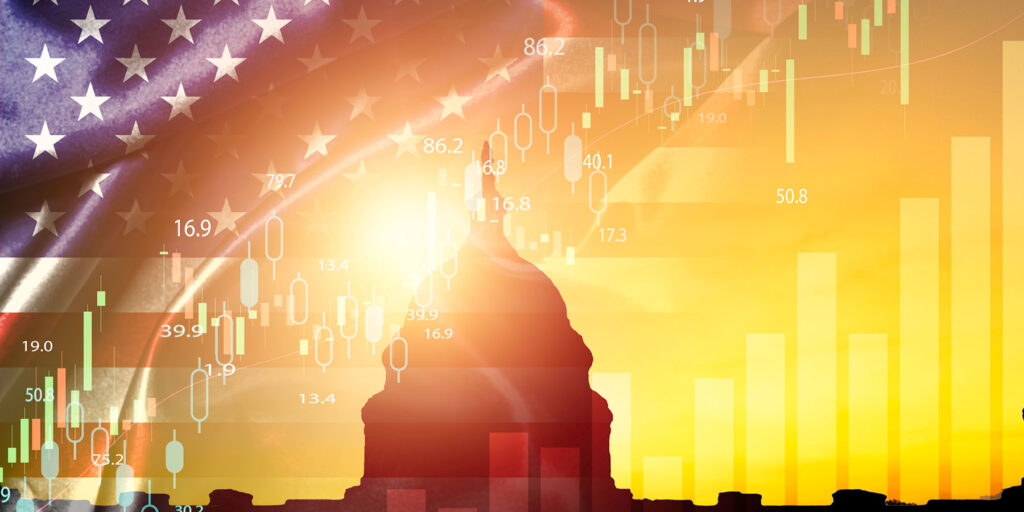Volatility has draped the Market and the highly anticipated Fed meeting did not provide a cooling agent. Every day this week saw a massive move followed by reversals. Early in the week brought big gaps down followed by extraordinary surges higher. The direction changed on Fed Day. Stocks initially rallied Wednesday, but ended the day lower. The overnight futures Market sold-off heavily, coming very close to the Monday lows. But they pared those losses and exploded higher at the open only to close the Thursday session back in the red. Then came Apple.
The largest and arguably best-run company simply blew away estimates for both revenue and profit. Apple generated $123 Billion in revenue for the December Quarter. That was just in 3 months! The company also said it sees improvements in its supply chain. That’s huge. For a day perhaps, fundamentals mattered.
Apple’s report triggered a rally in Tech while the rest of the overall Market churned between green and red Friday. It ended the week on a high note with a lot of green. This week brought both the worst and the best days for the Stock Market since the Covid crash. To say the Market has been volatile is a complete and total understatement. Exhausted? I bet.
The Fed stayed the course. There was no change in the Fed Funds rate, no shift in the timeline for raising rates, no adjustment to the pace of tapering, and no indication that they intend to lift rates in larger steps. So what did they say?
It started and in many ways ends with this: “This is going to be a year in which we move steadily away from the very highly accommodative monetary policy that we put in place to deal with the economic effects of the pandemic.” That was Fed Chair Powell at the news conference. He left the door open to raising rates at consecutive policy meetings. These meetings are held on average every six weeks. The Fed has not raised rates at every meeting in a calendar year since 2006. Aggressive rate hikes have become unfamiliar stuff. It is certainly playing a role in the turbulent Market price action.
The Fed has basically been in emergency mode since the Financial Crisis. That was the first time rates ever went to zero. The Fed finally started to tighten in the middle of the last decade. Ben Bernanke presided over the Financial Crisis and crisis management. Janet Yellen took the baton from him and initiated a rate hike campaign in 2015. That ended poorly. Jerome Powell replaced Yellen in 2017, and in 2018 the Fed went too far with those rate hikes, ignoring the Bond Market. The result will forever be remembered as the Christmas Massacre of 2018.
The Fed went back to emergency mode in the Spring of 2020. The central bank cut the overnight rate to zero again and started buying bonds to lower long-term rates to combat the Covid crash. The result was a short recession, preventing a long one. They said they’d do whatever it takes. It worked. It worked big time. But whatever it takes has costs.
The savings rate swelled, as did asset prices. Insatiable demand for goods combined with supply shortages for key components, like semiconductors, pushed inflation to its highest levels in 4 decades. Consumer prices rose well north of the Fed’s 2% estimate and are showing no signs of getting anywhere near it anytime soon. The Fed thought inflation was “transitory.” But they officially retired that term. There are signs that those price increases have flattened out and even declined in some areas. Except for Oil. That keeps hitting multi-year highs. But the Fed made it clear, with unemployment low, inflation is now priority #1.
The Fed has a dual mandate: Maximum employment and stable prices. The Fed oversees the overnight rate. That’s the interest rate that banks borrow from each other. The Market determines everything else. Did you know that the Fed Funds rate has ranged from zero to 20% for the last 50 years? It’s spent most of the time between 2% and 5%, which is kind of the sweet spot for a healthy economy. Paul Volcker took it to 20% in 1980 to whip inflation. It’s never been close since.
Interest rates are the price of money. It’s gone up. It’s more expensive to borrow now. For certain, it’s still cheap by historical measures, but it’s getting less cheap and that will only continue. The tightening approach by the Fed is designed to cool economic activity from overheating. It’s also designed to prevent asset bubbles, an unintended consequence of the Fed’s emergency measures.
We have long felt that the central bank should’ve started raising rates and stopped its asset purchases over a year ago, when the Stock Market started behaving badly. Investor euphoria sent speculative assets soaring, and the chase was on. That was 2021. They’re soaring no longer. Financial gravity has set in. It seems as though stocks will stay grounded a bit as the process plays out.
The prospect of higher rates and a shrinking Fed portfolio to reduce inflation has triggered this Market volatility. The situation in Ukraine hasn’t helped. Risk assets like Tech stocks and cryptocurrencies have generally fared the worst.
Over the past 65 days, we’ve seen the Value Factor in stocks have a positive performance against the general Market in the 99th percentile of all readings going back 15 years! Conversely, we’ve seen High Volatility stocks have a negative performance this bad only two other times in 15 years: the Covid Crash (March ’20) and the Great Financial Crisis (’09).
The 2-Year Treasury yield jumped to 1.17% on Wednesday. That was the biggest single-day rise in years. That is the front-end of the Yield Curve. The 2-Year Treasury is now factoring in 4-5 Fed rate hikes this year. The Market is assigning a 53% probability of 5 rate hikes this year, up from 31% before the Fed meeting. There is a near 100% certainty of the first rate hike occurring at the March meeting. But after that is a big question.
There are some mixed messages which create this turmoil and uncertainty. The back-end of the curve, measured by the 10 and 30-Year Treasury, has fallen, signaling anything more than 3 hikes would be a mistake. The result is a flattening of the yield curve, which is never a good sign. It’s the flattest since 2020.
The spread between the 10-Year and the 2-Year yield is just 0.6%, a multi-year low. Even more pronounced is the spread between 10s and 30s, which is 0.3%. Think about this: who would want to take on 20 additional years of risk, in an inflationary environment no less, for just 0.3% more interest? Not many. That’s a sign that things still aren’t right.
So where does all this leave us for the Market heading into the weekend? Our thoughts are this: the recalibration for higher rates and less Fed stimulus has taken out a lot of air in the Stock Market. In fact, it could’ve overshot in this correction, pricing in a more aggressive Fed than what will eventually prove to be actual. The Monday lows have been tested a couple of times this week, and so far have held. That’s important. To be clear, we aren’t saying that the lows are in. We never know that. But this week put in place what we’d call a meaningful low to work off as a base. Corrections are not fun. They’re healthy. They’re part of the Market way. But they definitely aren’t fun.
We expect more volatility ahead and plan to keep navigating through it very tactically. Our action plan mapped out the first week of January still applies. These declines just came faster than anticipated. We knew there would be volatility. That’s what shakes people out. There’s a lot of Bearishness right now. Investor mood is beyond sour. It doesn’t mean the Market is going to bottom around these lows. But history has shown it’s a pretty good sign that we could be close. We were very active tactically this week in defense and will continue to take advantage of this volatile price action. There’s going to be a time to get on offense. The first month of 2022 has been choppy. It’s likely to continue. Keep those belts buckled.
Have a nice weekend. We’ll be back, dark and early on Monday.
Mike






